Hermeticism: From ancient prophets to the New World Order
MUSLIM CONSPIRACY THEORY COURTESY DAILY SABAH
TURKEY
BY MEHMET HASAN BULUT
It is said in Islamic sources that the Prophet Idris also relayed the sciences of mysticism and ledün (divine secrets) to his distinguished believers.
He preached that the soul was a beautiful and luminous being, that it passed through the heavens and entered the dark body, and that if a person indulged in bodily and worldly pleasures, he would be inferior even to animals.
However, if he used his mind and controlled his nafs (mostly referred to as the "ego") in the body, his spirit would rise to heaven again, and he would become a perfect human being.
He himself retired to khalwa, a solitary retreat or seclusion. He was then involved in dhikr (remembrance), which are devotional acts where phrases and prayers are repeated, riyazet (asceticism) and mücahede (struggle, usually against nafs).
It is said that he would remember Allah every time he stabbed his needle into fabric while sewing.
The Prophet Idris divided the inhabited places of the earth into four parts. He left Egypt after appointing a deputy for each of them. On the day of Ashura, he was raised to the fourth heaven, or the realm of the sun. According to some scholars, he was lifted to heaven before he died, just like the Prophet Isa (Jesus).
In pre-Islamic sources, it is written that while being raised to the sky, he turned into a flame and a peal of thunder was heard.
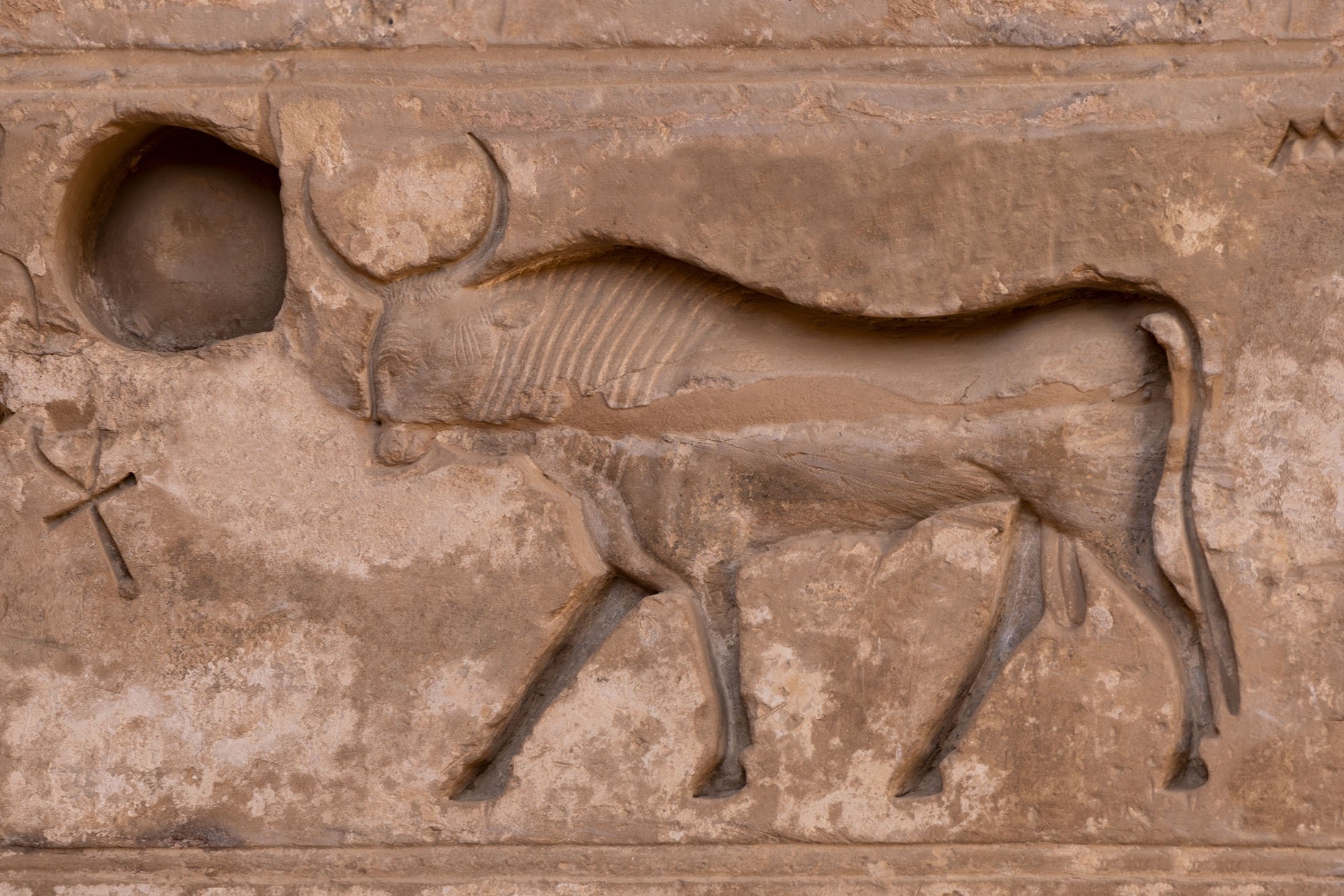
BY MEHMET HASAN BULUT
ISTANBUL ARTS
AUG 01, 2021
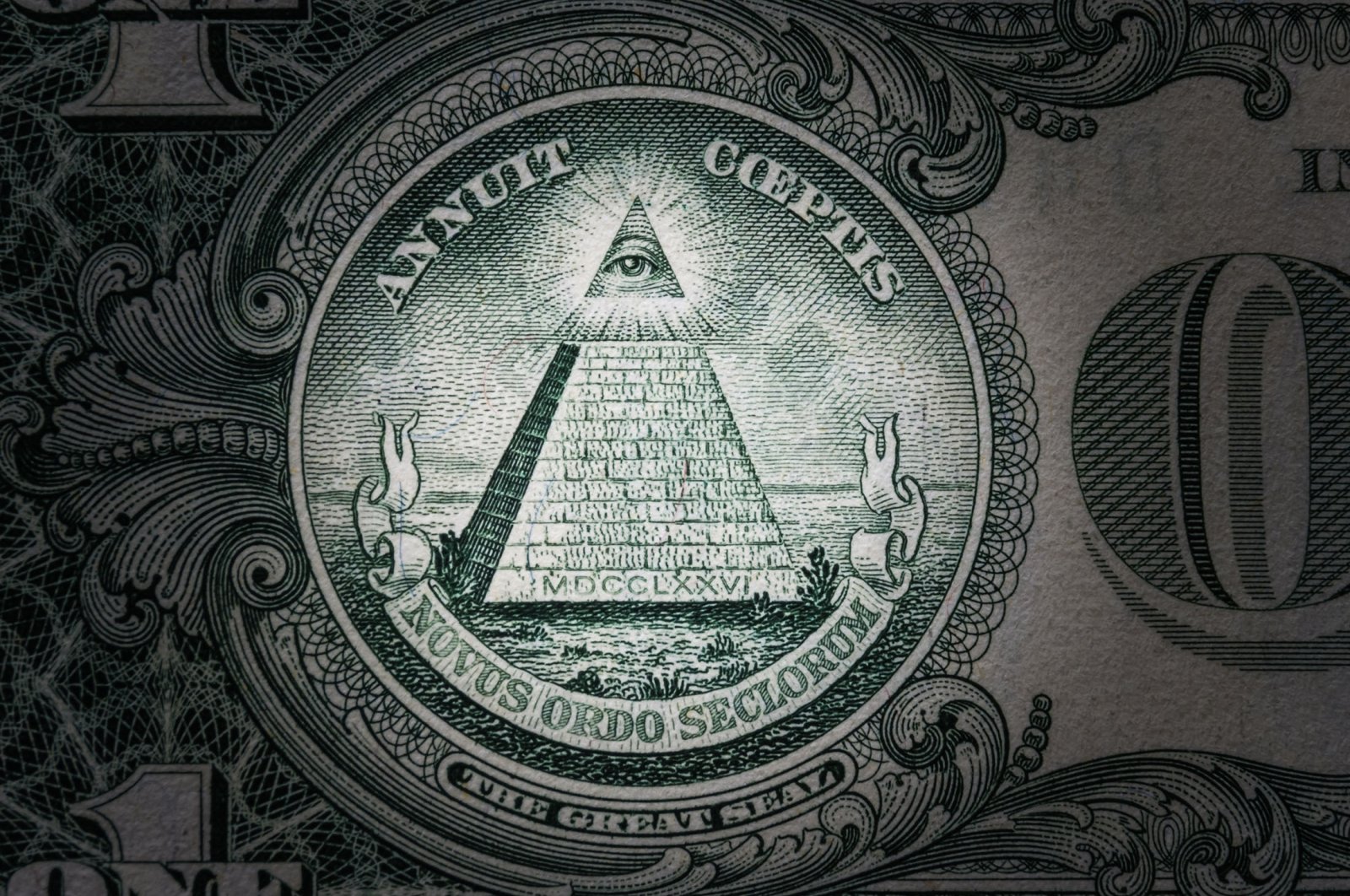
The Eye of Providence, a symbol of freemasonry, can be seen on the $1 bill accompanied with the phrase "Novus ordo seclorum" (New world order). (Shutterstock Photo)
Hermeticism, an ancient philosophical system based on the purported teachings of Hermes Trismegistus, can be traced back to biblical prophets and boasts a reach spreading throughout history all the way to the New World Order
The Prophet Idris, the second prophet mentioned in the Quran, was the founder of numerous sciences. It is believed that he was called "Idris," which derives from Arabic "dars," meaning "to study," for this reason. He was the first to write with a pencil, thus effectively inventing writing.
In historical Islamic sources, it is written that he lived in Babylon before Noah's flood. Upon the enmity from the people, he migrated to Egypt with a small number of believers. He reigned there and was given three great blessings, namely that of prophethood, wisdom and sovereignty. That is why he was known as "Müselles bin Ni'ma," meaning "he who has been given three blessings."
According to the narration of Islamic scholars, the Prophet Idris was raised to the sky while he was alive. He remained in the seventh heaven for 30 years and returned to earth. He shared with people what he had witnessed in the heavens, teaching them the science of "nücum," or astrology.
He foretold in great detail the great flood that would occur after him, during the time of the Prophet Noah. It is believed that he inscribed certain sciences with hieroglyphs on two stone pillars and thus protected this knowledge from the flood. There are also those who say that he had a pyramid built and had the inside surface of the stones inscribed with this knowledge.

AUG 01, 2021

The Eye of Providence, a symbol of freemasonry, can be seen on the $1 bill accompanied with the phrase "Novus ordo seclorum" (New world order). (Shutterstock Photo)
Hermeticism, an ancient philosophical system based on the purported teachings of Hermes Trismegistus, can be traced back to biblical prophets and boasts a reach spreading throughout history all the way to the New World Order
The Prophet Idris, the second prophet mentioned in the Quran, was the founder of numerous sciences. It is believed that he was called "Idris," which derives from Arabic "dars," meaning "to study," for this reason. He was the first to write with a pencil, thus effectively inventing writing.
In historical Islamic sources, it is written that he lived in Babylon before Noah's flood. Upon the enmity from the people, he migrated to Egypt with a small number of believers. He reigned there and was given three great blessings, namely that of prophethood, wisdom and sovereignty. That is why he was known as "Müselles bin Ni'ma," meaning "he who has been given three blessings."
According to the narration of Islamic scholars, the Prophet Idris was raised to the sky while he was alive. He remained in the seventh heaven for 30 years and returned to earth. He shared with people what he had witnessed in the heavens, teaching them the science of "nücum," or astrology.
He foretold in great detail the great flood that would occur after him, during the time of the Prophet Noah. It is believed that he inscribed certain sciences with hieroglyphs on two stone pillars and thus protected this knowledge from the flood. There are also those who say that he had a pyramid built and had the inside surface of the stones inscribed with this knowledge.

The ruins of the Temple of Bacchus, the Roman god of wine, can be seen in Roman Heliopolis, Baalbek, Lebanon, Jan. 23, 2019. (Shutterstock Photo)
It is said in Islamic sources that the Prophet Idris also relayed the sciences of mysticism and ledün (divine secrets) to his distinguished believers.
He preached that the soul was a beautiful and luminous being, that it passed through the heavens and entered the dark body, and that if a person indulged in bodily and worldly pleasures, he would be inferior even to animals.
However, if he used his mind and controlled his nafs (mostly referred to as the "ego") in the body, his spirit would rise to heaven again, and he would become a perfect human being.
He himself retired to khalwa, a solitary retreat or seclusion. He was then involved in dhikr (remembrance), which are devotional acts where phrases and prayers are repeated, riyazet (asceticism) and mücahede (struggle, usually against nafs).
It is said that he would remember Allah every time he stabbed his needle into fabric while sewing.
The Prophet Idris divided the inhabited places of the earth into four parts. He left Egypt after appointing a deputy for each of them. On the day of Ashura, he was raised to the fourth heaven, or the realm of the sun. According to some scholars, he was lifted to heaven before he died, just like the Prophet Isa (Jesus).
In pre-Islamic sources, it is written that while being raised to the sky, he turned into a flame and a peal of thunder was heard.

A sunken relief depicts the sacred bull of Egypt at at Habu Temple, Luxor, Egypt. (Shutterstock Photo)
The Golden Calf
The famous Islamic scholar Ahmad Sirhindi, widely known as Imam Rabbani, writes that Allah's blessings come to everyone, good or bad, but that bad people can't benefit from them. Indeed, the sun shines upon both the man who is washing the clothes and the clothes themselves in the same way. However, it darkens the man's face while it whitens the clothes.
So, if a person is blind, there is no fault in the sun.
When the legacy of the Prophet Idris fell into the hands of people who were not competent in esoteric sciences, it was misunderstood and falsified. This, throughout history, has given rise to heterodox sects.
After the Prophet Idris was taken to the sky, the Egyptians called him Thoth and deified him.
Members of some sects located in an ancient Egyptian city known as Heliopolis (City of the Sun) by the Greeks, began to worship the sun god, whom they named Ra. At sunrise and sunset, they turned toward the sun and worshiped it with their arms crossed on their chests.
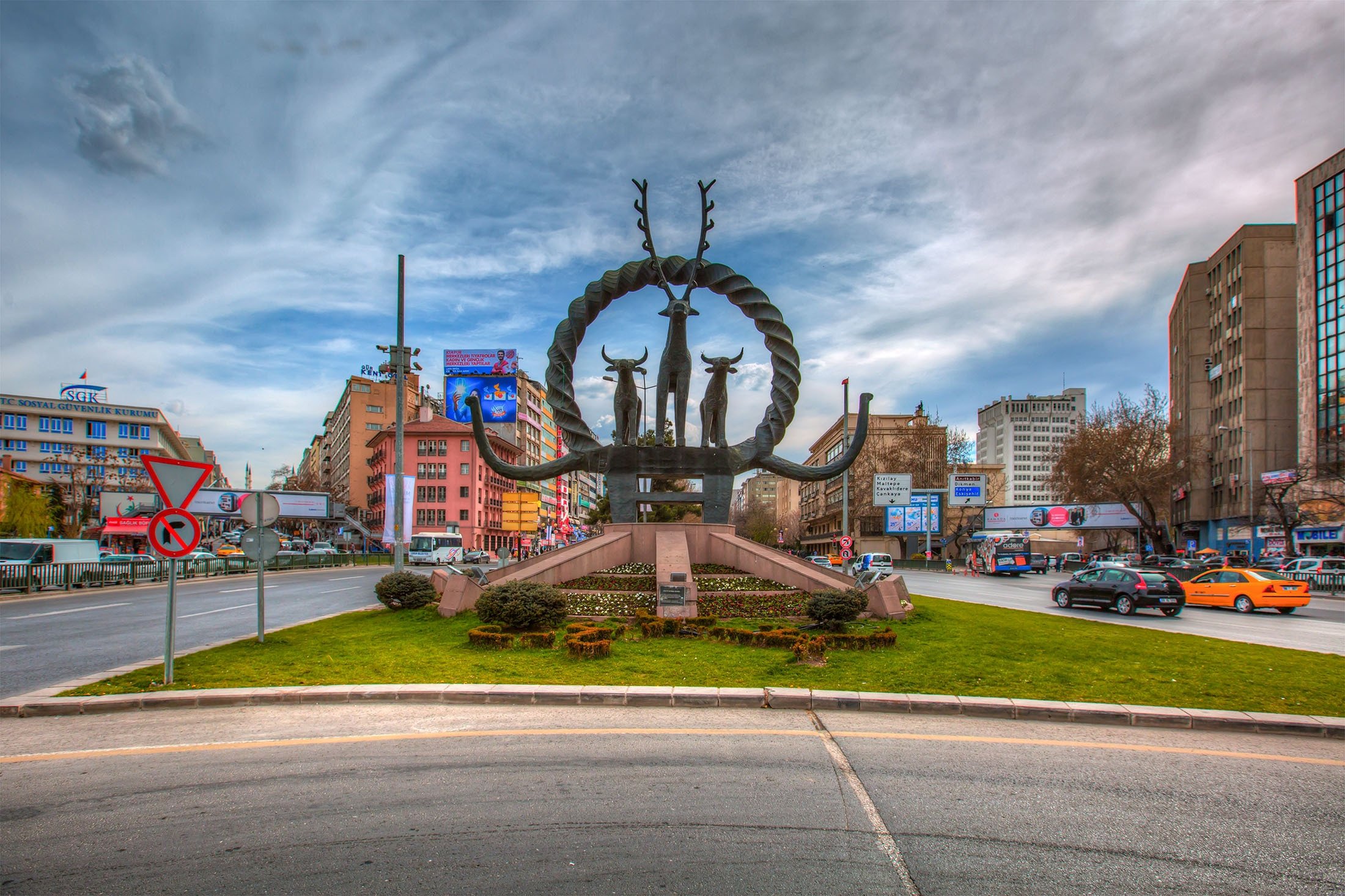
The Golden Calf
The famous Islamic scholar Ahmad Sirhindi, widely known as Imam Rabbani, writes that Allah's blessings come to everyone, good or bad, but that bad people can't benefit from them. Indeed, the sun shines upon both the man who is washing the clothes and the clothes themselves in the same way. However, it darkens the man's face while it whitens the clothes.
So, if a person is blind, there is no fault in the sun.
When the legacy of the Prophet Idris fell into the hands of people who were not competent in esoteric sciences, it was misunderstood and falsified. This, throughout history, has given rise to heterodox sects.
After the Prophet Idris was taken to the sky, the Egyptians called him Thoth and deified him.
Members of some sects located in an ancient Egyptian city known as Heliopolis (City of the Sun) by the Greeks, began to worship the sun god, whom they named Ra. At sunrise and sunset, they turned toward the sun and worshiped it with their arms crossed on their chests.

A sculpture of the icon Hittite Sun stands at the Sıhhiye Square in Ankara, Turkey, March 25, 2014. (Shhutterstock Photo)
The sultans of Egypt, the pharaohs, also declared themselves gods, claiming to be descendants of Ra.
The sects in the City of the Sun regarded the bull as the representative of the sun on earth. They made prophecies according to its actions. They began to worship statues of bulls who were carrying a sun disc between their horns. They called these idols "Apis."
The Prophet Muhammad said, “the sun rises (and sets) between the horns of Satan, and at that time the unbelievers bow down to it,” and he forbade praying at sunrise and sunset.
The Egyptian cult of the sun spread throughout the world, from the fire of the Zoroastrians in Persia to the veneration of the cow in India, to the sun-colored clothing of the Buddhists.
The Hittites, who were allies and neighbors of Egypt, were also under the influence of this belief. The horned Hittite sun, which used to be the emblem of the Ankara Municipality, also represents Apis.
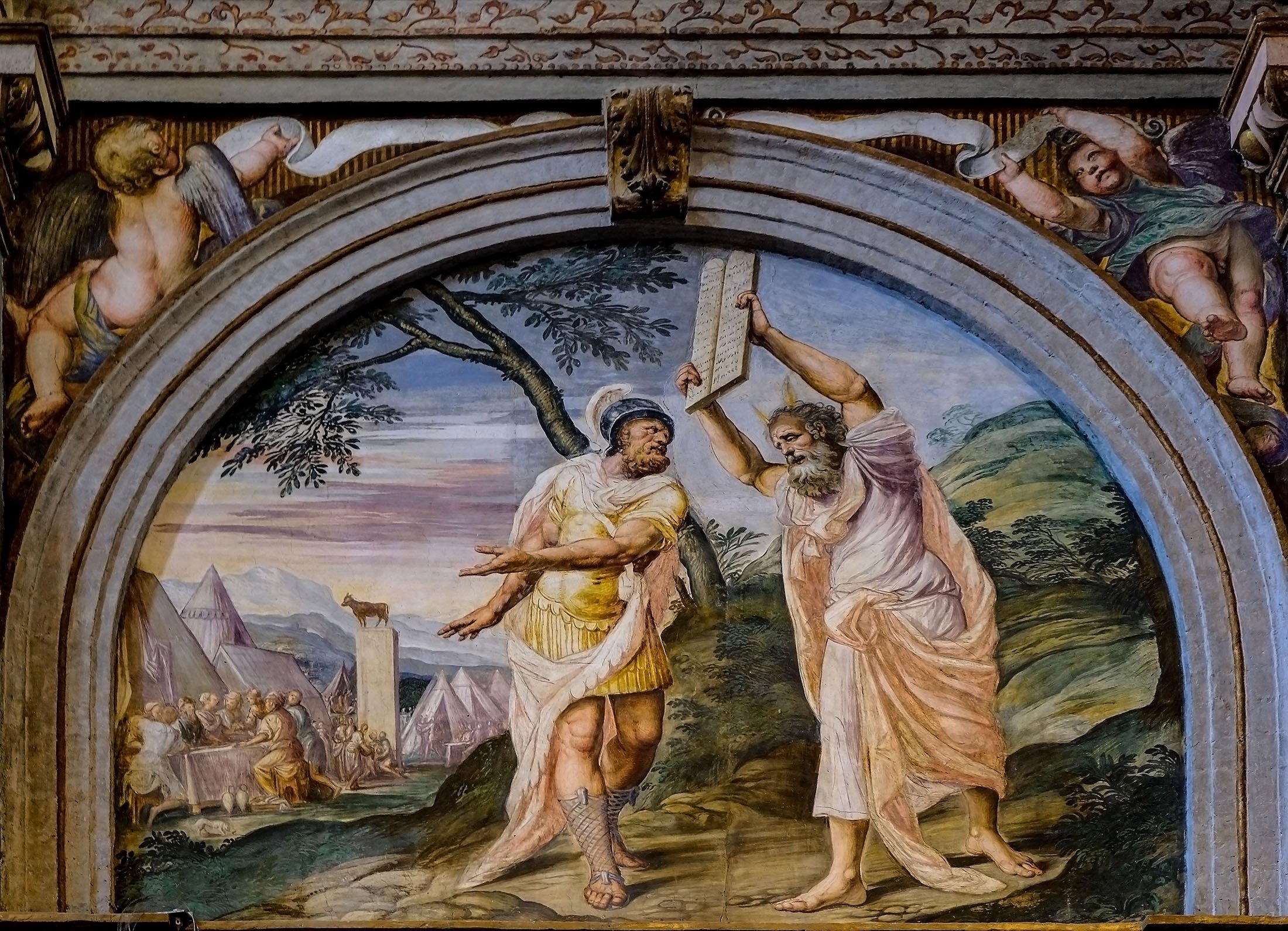
The sultans of Egypt, the pharaohs, also declared themselves gods, claiming to be descendants of Ra.
The sects in the City of the Sun regarded the bull as the representative of the sun on earth. They made prophecies according to its actions. They began to worship statues of bulls who were carrying a sun disc between their horns. They called these idols "Apis."
The Prophet Muhammad said, “the sun rises (and sets) between the horns of Satan, and at that time the unbelievers bow down to it,” and he forbade praying at sunrise and sunset.
The Egyptian cult of the sun spread throughout the world, from the fire of the Zoroastrians in Persia to the veneration of the cow in India, to the sun-colored clothing of the Buddhists.
The Hittites, who were allies and neighbors of Egypt, were also under the influence of this belief. The horned Hittite sun, which used to be the emblem of the Ankara Municipality, also represents Apis.

A fresco depicts the Prophet Moses descend from Mount Sinai with the Ten Commandments in the Church of Saint Maurice al Monastero Maggiore, Milan, Italy, July 25, 2017. (Shutterstock Photo)
The children of the Prophet Yaqub (Jacob), namely Israelites, settled in Egypt with the Prophet Yusuf (Joseph).
The Jews knew the Prophet Idris by the name of Enoch, or Akhnukh in Arabic. Although it was reported that anyone who worshiped the sun would be stoned to death, the cult of the sun was also popular among the Jews.
While the Prophet Moses, or Musa, was taking the Jews from Egypt to Palestine, a Jew named Samiri melted gold jewelry and made an Apis when the prophet ascended Mount Sinai. He had some of the Jews worship it. When the Prophet Moses returned, he expelled Samiri.
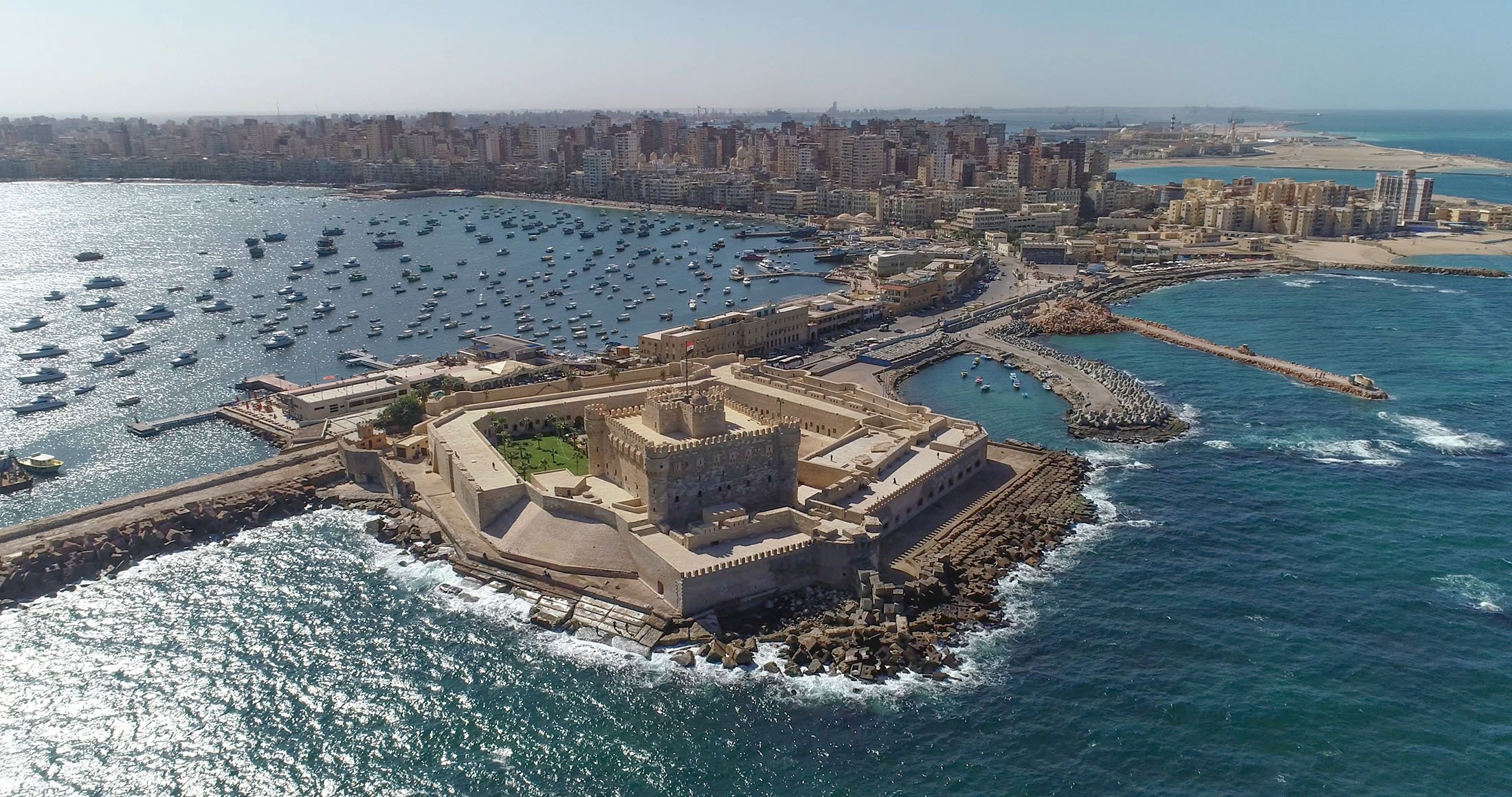
The children of the Prophet Yaqub (Jacob), namely Israelites, settled in Egypt with the Prophet Yusuf (Joseph).
The Jews knew the Prophet Idris by the name of Enoch, or Akhnukh in Arabic. Although it was reported that anyone who worshiped the sun would be stoned to death, the cult of the sun was also popular among the Jews.
While the Prophet Moses, or Musa, was taking the Jews from Egypt to Palestine, a Jew named Samiri melted gold jewelry and made an Apis when the prophet ascended Mount Sinai. He had some of the Jews worship it. When the Prophet Moses returned, he expelled Samiri.

An aerial view shows the city of Alexandria with the Citadel of Qaitbay shining in the sun, Alexandria, Egypt. (Shutterstock Photo)
Alexandria
The Greeks called the Prophet Idris "Hermes," which means scholar. His nickname, Müselles bin Ni'ma, meanwhile was translated as Trismegistus. So, he was called Hermes Trismegistus (Hermes the Thrice-Greatest).
The distorted sciences attributed to him were called Hermeticism. Philosophers such as Pythagoras and Plato stayed in Egypt for many years and took lessons from the sects there. Thus, Greek philosophy was born. The mathematics of the Pythagoreans, Plato's ethics and theology, and Aristotle's understanding of physics are all based on Hermeticism.
Alexandria, one of the largest cities in the world before Rome, was founded by Alexander the Great. After Memphis, it became the new center of Egypt. A temple of Serapis was built in the city. The order of Serapis was the Greek version of the order of Apis. Epistles on Hermeticism, called Hermetica, were written by the members of the sect.
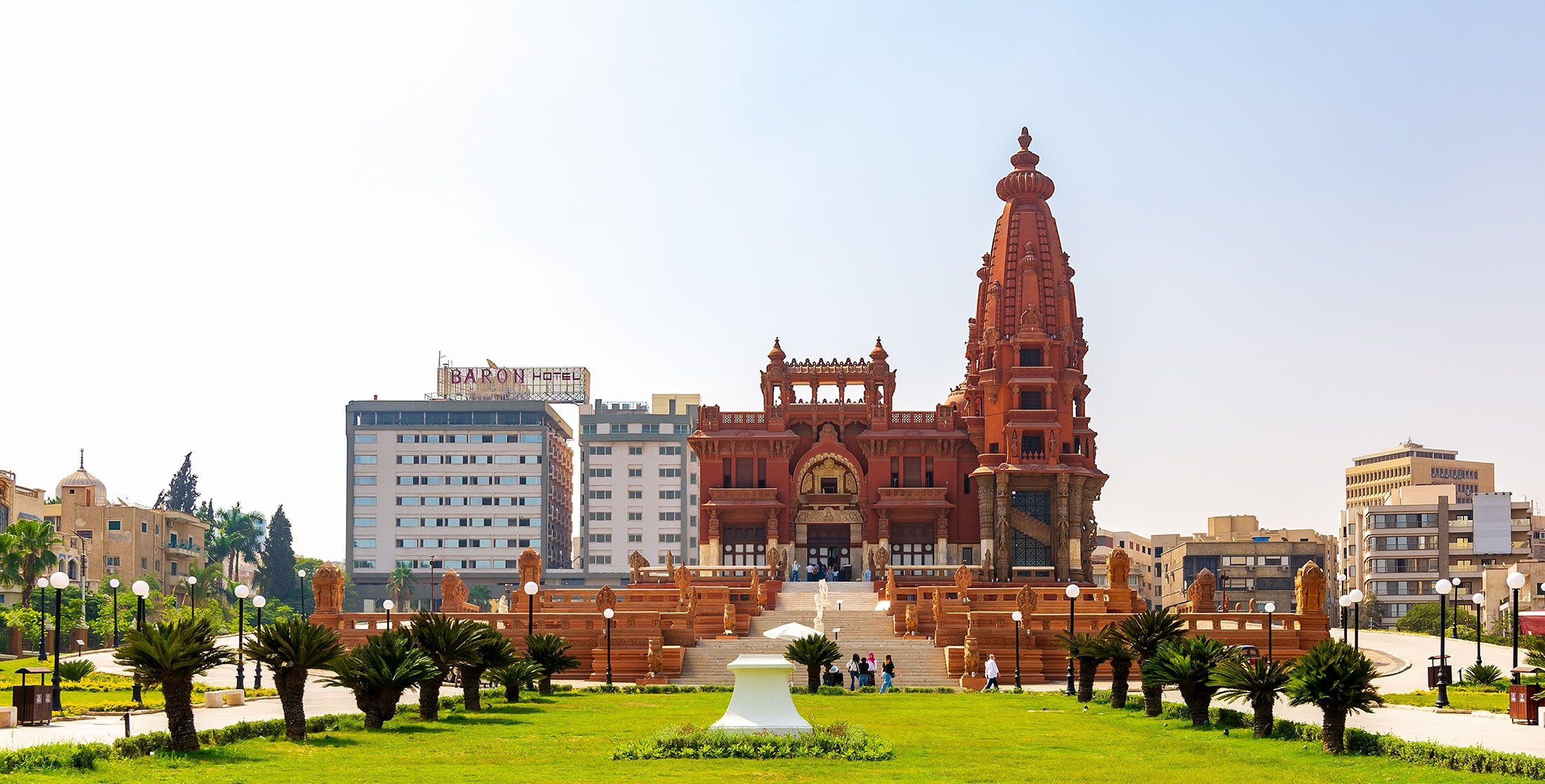 The facade of Baron Empain Palace, a historic mansion inspired by the Cambodian Hindu temple of Angkor Wat, can be seen in the Heliopolis district, Cairo, Egypt, July 30, 2020. (Shutterstock Photo)
The facade of Baron Empain Palace, a historic mansion inspired by the Cambodian Hindu temple of Angkor Wat, can be seen in the Heliopolis district, Cairo, Egypt, July 30, 2020. (Shutterstock Photo)
Because the Prophet Jesus was on Earth for a short time and attracted a few faithful believers, the religion he preached could not be known in exact detail. After the ascension of the Prophet Jesus, Christianity mixed with Hermeticism. Due to this, a completely different religion emerged under the name of Christianity.
For example, every luminary (the five inner planets and the sun and moon) has a day dedicated to it. The day of the sun is Sunday, which comes from "dies Solis," literally "day" and "sun." Therefore, Sunday was considered a holy day in Christianity.
The trinity in Hermeticism also passed to Christianity, in the form of the father, the son and the holy spirit. December 25, when the day becomes longer than the night, was accepted as the date of the birth of the Prophet Jesus.
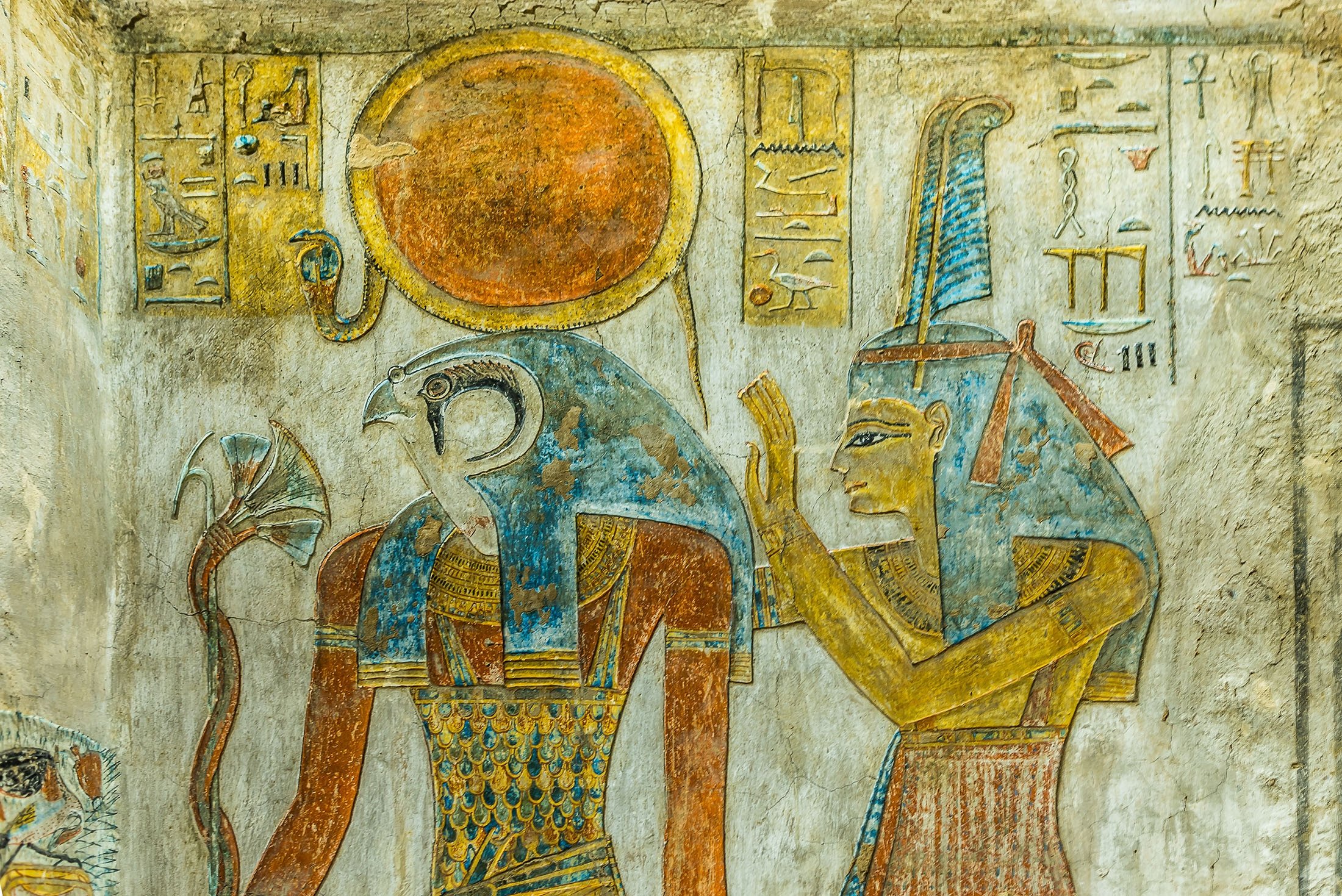
Alexandria
The Greeks called the Prophet Idris "Hermes," which means scholar. His nickname, Müselles bin Ni'ma, meanwhile was translated as Trismegistus. So, he was called Hermes Trismegistus (Hermes the Thrice-Greatest).
The distorted sciences attributed to him were called Hermeticism. Philosophers such as Pythagoras and Plato stayed in Egypt for many years and took lessons from the sects there. Thus, Greek philosophy was born. The mathematics of the Pythagoreans, Plato's ethics and theology, and Aristotle's understanding of physics are all based on Hermeticism.
Alexandria, one of the largest cities in the world before Rome, was founded by Alexander the Great. After Memphis, it became the new center of Egypt. A temple of Serapis was built in the city. The order of Serapis was the Greek version of the order of Apis. Epistles on Hermeticism, called Hermetica, were written by the members of the sect.
 The facade of Baron Empain Palace, a historic mansion inspired by the Cambodian Hindu temple of Angkor Wat, can be seen in the Heliopolis district, Cairo, Egypt, July 30, 2020. (Shutterstock Photo)
The facade of Baron Empain Palace, a historic mansion inspired by the Cambodian Hindu temple of Angkor Wat, can be seen in the Heliopolis district, Cairo, Egypt, July 30, 2020. (Shutterstock Photo)Because the Prophet Jesus was on Earth for a short time and attracted a few faithful believers, the religion he preached could not be known in exact detail. After the ascension of the Prophet Jesus, Christianity mixed with Hermeticism. Due to this, a completely different religion emerged under the name of Christianity.
For example, every luminary (the five inner planets and the sun and moon) has a day dedicated to it. The day of the sun is Sunday, which comes from "dies Solis," literally "day" and "sun." Therefore, Sunday was considered a holy day in Christianity.
The trinity in Hermeticism also passed to Christianity, in the form of the father, the son and the holy spirit. December 25, when the day becomes longer than the night, was accepted as the date of the birth of the Prophet Jesus.

The paintings of Egyptian god Ra and Maat can be seen in the tomb KV 14, the tomb of Twosret and Setnakhte in the Valley of the Kings, Luxor, Egypt, Oct. 21, 2018. (Shutterstock Photo)
The Ancient Philosophy
In the Islamic era, philosophers such as al-Kindi, al-Farabi, Ibn Sina and Ibn Rushd, often Latinized as Averroes, were under the influence of Hermeticism.
Yazidis, who stand before the sun every day and pray to a deity named Melek Taus (Peacock Angel), also follow this belief.
Hermeticism led to the emergence of esoteric sects such as Isma'ilism in Islamic lands. Batiniyya (esoterics) called the wisdom contained in Hermeticism the eternal wisdom, that is, the ancient philosophy. However, they saw it not as divine wisdom based on revelation but as an ancient philosophy dating back to prehistoric times.
They believed that the prophets founded their religions on this philosophy. So, the esoteric part of religions was essential and foundational, whereas Shariah, religious laws, consisted of rules applied according to the times.
Struggles took place between Hermetics and Sunni Sufi orders which were subject to the Shariah of the Prophet Muhammad, just like they did between these orders and the Order of Assassins. However, the Hermetics infiltrated some of these sects and lodges over time and distorted them.
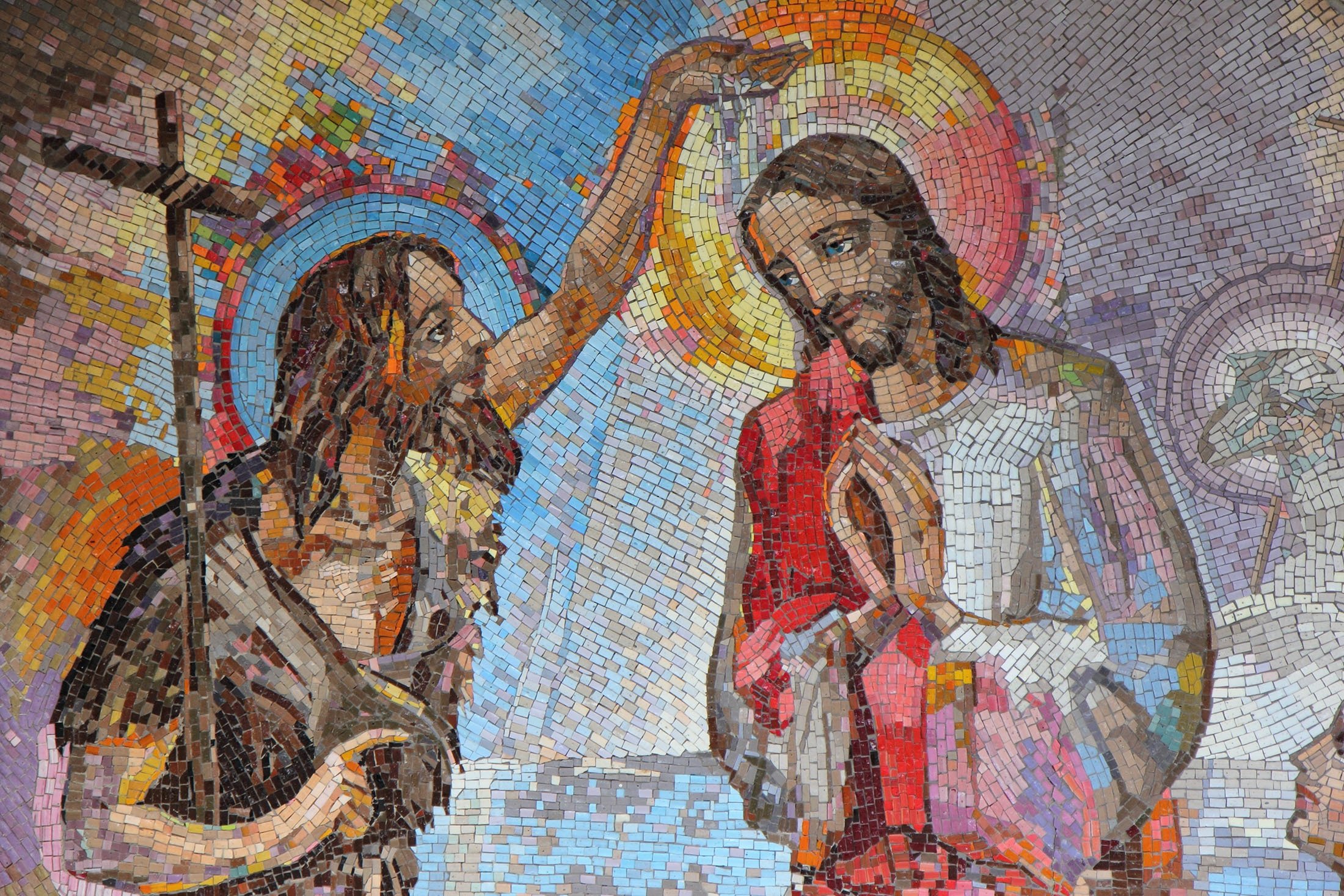
The Ancient Philosophy
In the Islamic era, philosophers such as al-Kindi, al-Farabi, Ibn Sina and Ibn Rushd, often Latinized as Averroes, were under the influence of Hermeticism.
Yazidis, who stand before the sun every day and pray to a deity named Melek Taus (Peacock Angel), also follow this belief.
Hermeticism led to the emergence of esoteric sects such as Isma'ilism in Islamic lands. Batiniyya (esoterics) called the wisdom contained in Hermeticism the eternal wisdom, that is, the ancient philosophy. However, they saw it not as divine wisdom based on revelation but as an ancient philosophy dating back to prehistoric times.
They believed that the prophets founded their religions on this philosophy. So, the esoteric part of religions was essential and foundational, whereas Shariah, religious laws, consisted of rules applied according to the times.
Struggles took place between Hermetics and Sunni Sufi orders which were subject to the Shariah of the Prophet Muhammad, just like they did between these orders and the Order of Assassins. However, the Hermetics infiltrated some of these sects and lodges over time and distorted them.

A historical mosaic depicts the baptism of the Prophet Jesus by Saint John the Baptist, Medjugorje, Bosnia-Herzegovina, June 5, 2016. (Shutterstock Photo)
John the Baptist
The Prophet Ilyas (one of the prophets sent to the Israelites) preached in Baalbek, now located in modern-day Lebanon. The Greeks called this city Heliopolis too because its people worshiped the idol of Apis, which they called Ba'al.
In pre-Islamic sources, it is written that the Prophet Ilyas was taken to the sky, like the Prophet Idris, while riding a horse of flames.
The Jewish and Christian Hermetics believe that the Prophet Ilyas, whom they call Elijah, is the Prophet Yahya (John), that is, John the Baptist. According to them, the Prophet John was actually the Prophet Idris. So, the Prophet Idris had descended to Earth in the form of John the Baptist, also known as Elijah, and the baptism symbolized his rebirth.
The Prophet John was also seen as the last prophet by the Sabians (or Mandaeans), an ethnoreligious group following the monotheistic Gnostic religion of Mandaeism, who lived around Iraq and Iran. According to them, being baptized was considered the highest form of worship. They honored the sun. It is narrated that these were heterodox Jews who fled Palestine, that is, the followers of Samiri.
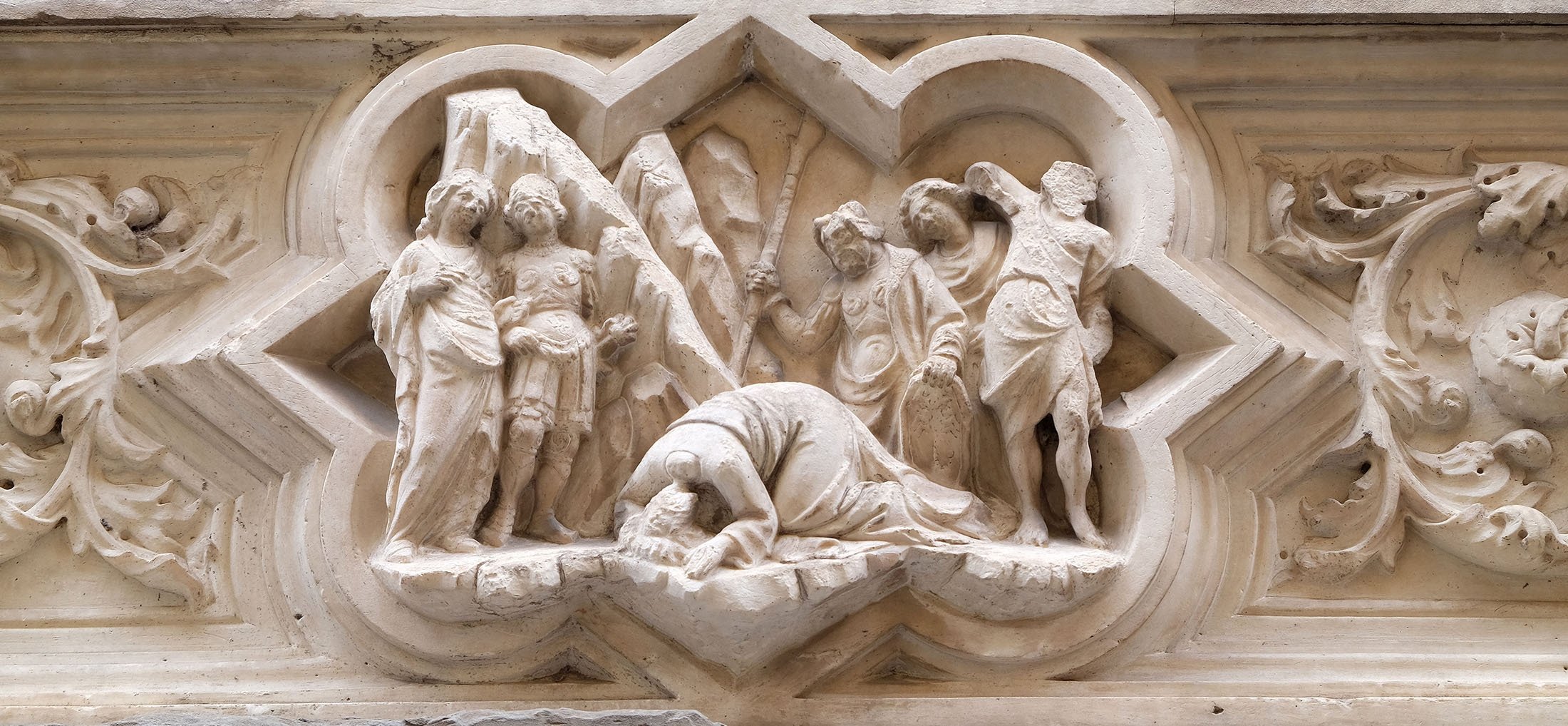
John the Baptist
The Prophet Ilyas (one of the prophets sent to the Israelites) preached in Baalbek, now located in modern-day Lebanon. The Greeks called this city Heliopolis too because its people worshiped the idol of Apis, which they called Ba'al.
In pre-Islamic sources, it is written that the Prophet Ilyas was taken to the sky, like the Prophet Idris, while riding a horse of flames.
The Jewish and Christian Hermetics believe that the Prophet Ilyas, whom they call Elijah, is the Prophet Yahya (John), that is, John the Baptist. According to them, the Prophet John was actually the Prophet Idris. So, the Prophet Idris had descended to Earth in the form of John the Baptist, also known as Elijah, and the baptism symbolized his rebirth.
The Prophet John was also seen as the last prophet by the Sabians (or Mandaeans), an ethnoreligious group following the monotheistic Gnostic religion of Mandaeism, who lived around Iraq and Iran. According to them, being baptized was considered the highest form of worship. They honored the sun. It is narrated that these were heterodox Jews who fled Palestine, that is, the followers of Samiri.

The Saint James the Greater predella depicts the beheading of Saint John the Baptist, on the external wall of Orsanmichele Church in Florence, Tuscany, Italy, Jan. 9, 2019. (Shutterstock Photo)
The Knights Templar, who settled in Islamic lands with the Crusades, were also Hermetics. They founded many churches in the name of John the Baptist. When their sect was banned, their property was passed to the Knights of Saint John in Jerusalem.
The order of Saint John was founded in Jerusalem in the name of John the Baptist. These knights, who continued the beliefs of the Templars and struggled against the Ottoman Empire, first fled to Cyprus, then to Rhodes and finally to Malta.
The order still continues today as the Knights of Malta, or the Knights Hospitaller.
Evliya Çelebi, the 17th-century Ottoman explorer, says that the Crusaders took the body of the Prophet John from a village near Nablus and took it to Rhodes and then to Malta. However, he writes, his blessed head remains in a golden bowl under the Umayyad Mosque in Damascus.
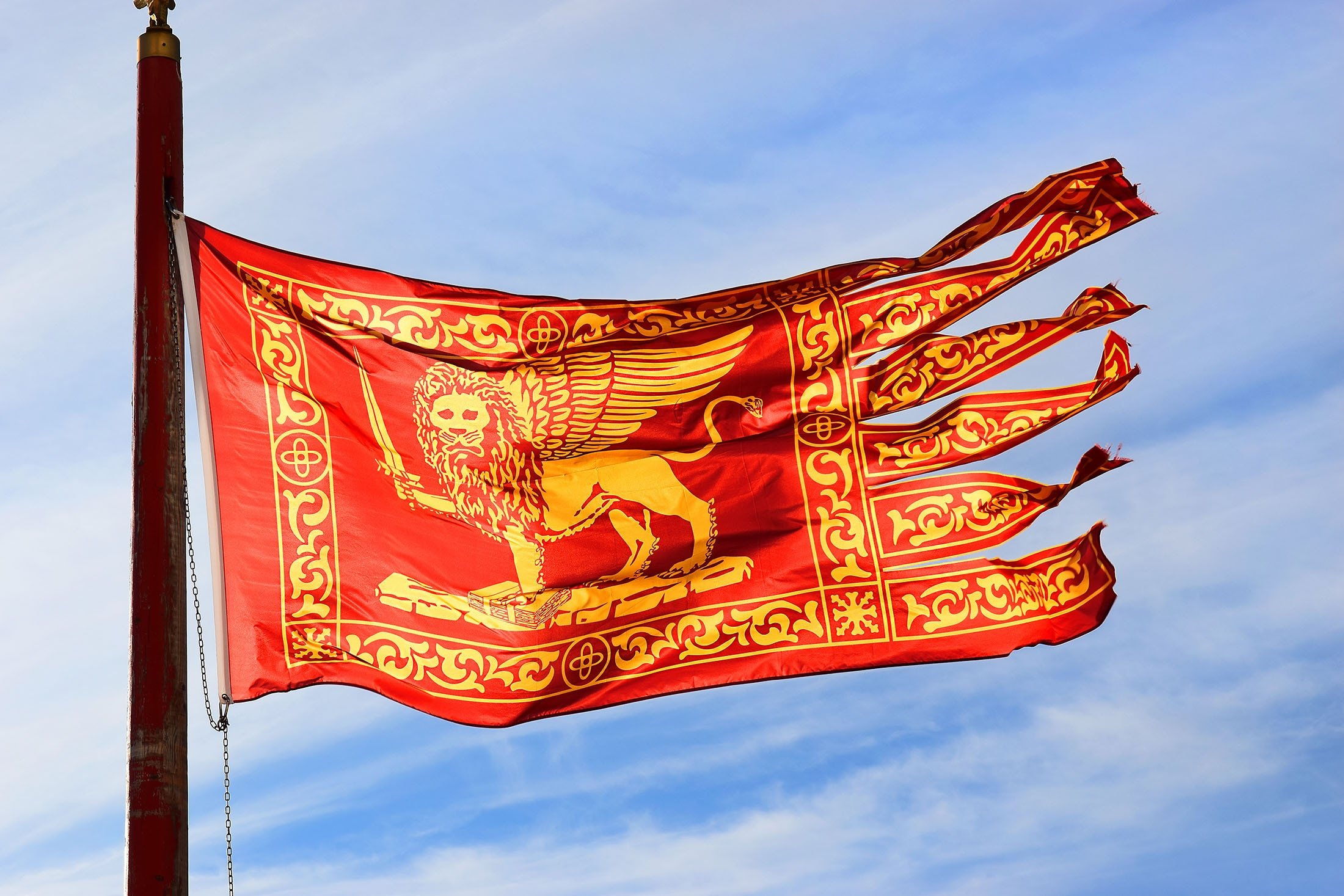
The Knights Templar, who settled in Islamic lands with the Crusades, were also Hermetics. They founded many churches in the name of John the Baptist. When their sect was banned, their property was passed to the Knights of Saint John in Jerusalem.
The order of Saint John was founded in Jerusalem in the name of John the Baptist. These knights, who continued the beliefs of the Templars and struggled against the Ottoman Empire, first fled to Cyprus, then to Rhodes and finally to Malta.
The order still continues today as the Knights of Malta, or the Knights Hospitaller.
Evliya Çelebi, the 17th-century Ottoman explorer, says that the Crusaders took the body of the Prophet John from a village near Nablus and took it to Rhodes and then to Malta. However, he writes, his blessed head remains in a golden bowl under the Umayyad Mosque in Damascus.

The Flag of the Republic of Venice, commonly known as the Standard of Saint Mark due to the Lion of Saint Mark on the flag, waves in the wind. (Shutterstock Photo)
The Winged Lion
The sun is depicted in hieroglyphs as a circle with a dot in its center, because the sun is the pole of the seven heavens. Since this shape could be drawn with a compass, the compass became the symbol of European Hermetics.
The sun is sometimes depicted as a lion in the pyramids because the zodiac sign Leo is associated with fire and ruled by the sun.
After the Muslims recaptured Jerusalem, Venice became the Templars' new headquarters. The winged lion was chosen as the flag of the country. The tower of San Pietro, the home of the Venetian bishop, was also built in the shape of the lighthouse of Alexandria.
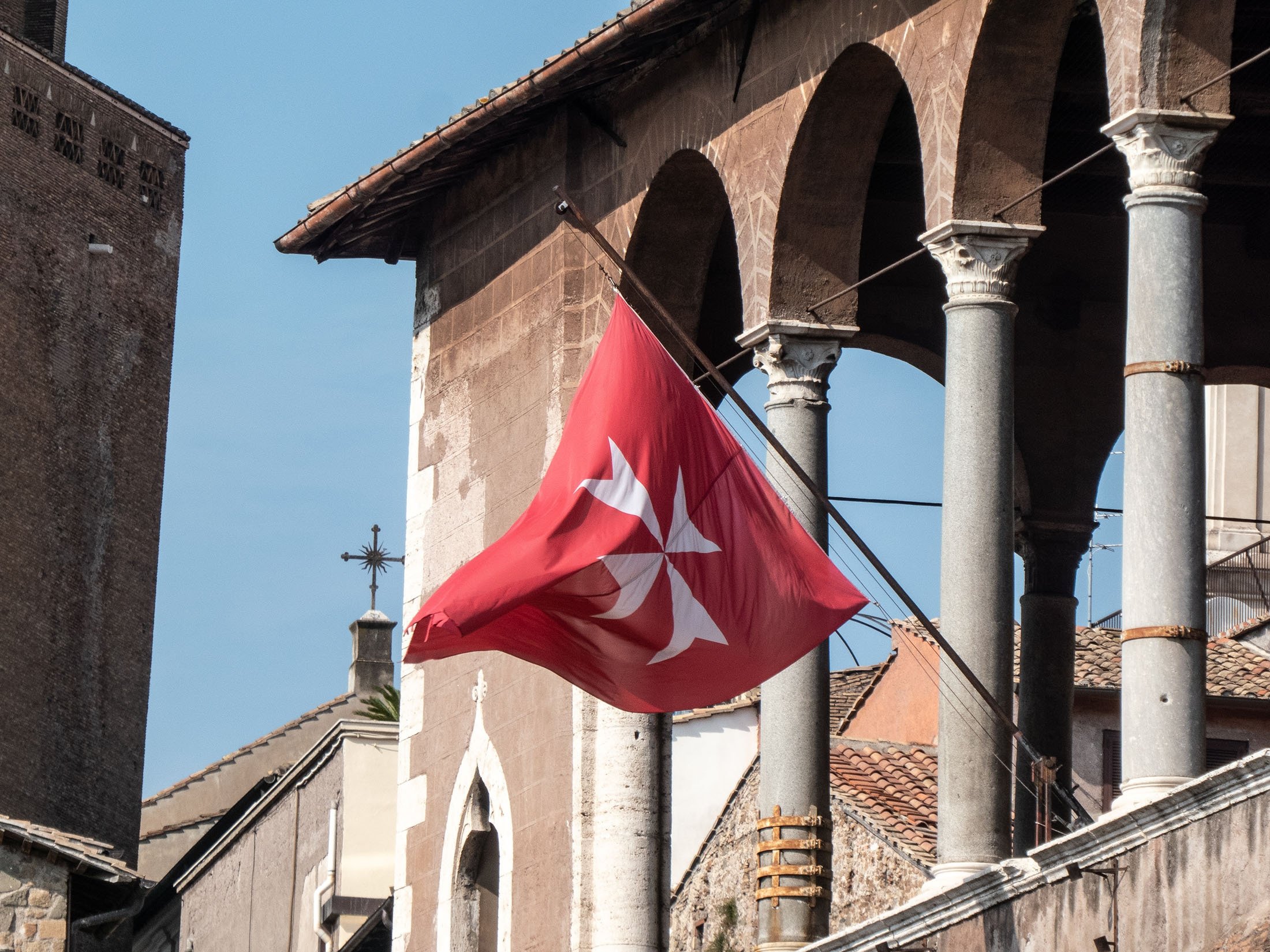
The Winged Lion
The sun is depicted in hieroglyphs as a circle with a dot in its center, because the sun is the pole of the seven heavens. Since this shape could be drawn with a compass, the compass became the symbol of European Hermetics.
The sun is sometimes depicted as a lion in the pyramids because the zodiac sign Leo is associated with fire and ruled by the sun.
After the Muslims recaptured Jerusalem, Venice became the Templars' new headquarters. The winged lion was chosen as the flag of the country. The tower of San Pietro, the home of the Venetian bishop, was also built in the shape of the lighthouse of Alexandria.

A flag of the Knights Hospitaller waves at the Casa dei Cavalieri di Rodi (House of the Knights of Rhodes), in the ruins of the Forum of Augustus, Rome, Italy, Aug. 10, 2018. (Shutterstock Photo)
A monk who came to Florence in 1460 brought with him the corpus of Hermetica. It was published in Venice in 1463, together with the translation of Plato by Cosimo de Medici. Thus, the Renaissance period and the humanism movement began in Italy.
Obelisks dedicated to the sun god in ancient Egypt were used as symbols of Hermeticism during the Renaissance period.
During this period, the struggle between Hermeticism and the Catholic Church began. European Hermetics established sects such as the Alumbrados (Illuminati) in Spain and the Spirituali in Italy. They succeeded in infiltrating the Church and even in removing the Pope.
In the Vatican, in the Appartamento Borgia (the Borgia Apartments) of Pope Paul III, the bull, the symbol of the Borgia family, was depicted as Apis and still stands today.

A monk who came to Florence in 1460 brought with him the corpus of Hermetica. It was published in Venice in 1463, together with the translation of Plato by Cosimo de Medici. Thus, the Renaissance period and the humanism movement began in Italy.
Obelisks dedicated to the sun god in ancient Egypt were used as symbols of Hermeticism during the Renaissance period.
During this period, the struggle between Hermeticism and the Catholic Church began. European Hermetics established sects such as the Alumbrados (Illuminati) in Spain and the Spirituali in Italy. They succeeded in infiltrating the Church and even in removing the Pope.
In the Vatican, in the Appartamento Borgia (the Borgia Apartments) of Pope Paul III, the bull, the symbol of the Borgia family, was depicted as Apis and still stands today.

A historical re-enactment of the military parade of the Order of the Knights of Saint John, or the Knights Hospitaller, can be seen in Valletta, Malta, June 25, 2017. (Shutterstock Photo)
The Enlightenment
At that time, there was a geocentric understanding of the universe in Europe. Copernicus, a Hermetic studying at the University of Padua in Venice, objected to this notion. He claimed that the sun was at the center.
Renaissance historian Frances Yates writes of this: "The discovery of Copernicus came to light with a citation from that famous work of Hermes Trismegistos, where Hermes explains the Egyptians worshiping the Sun in their magical religion."
Hermetic Newton's theory of gravity centered on the massive sun, also strengthened Copernicus' claim. Thus, modern "science" was born.
In the 16th century, the Hermetics founded a secret society called "Giovanni," which is the Italian equivalent of "John," in the house of Venetian aristocrat Morosini. The origins of the Young Turks, a political reform movement in the early 20th century, can also be traced back to this society.
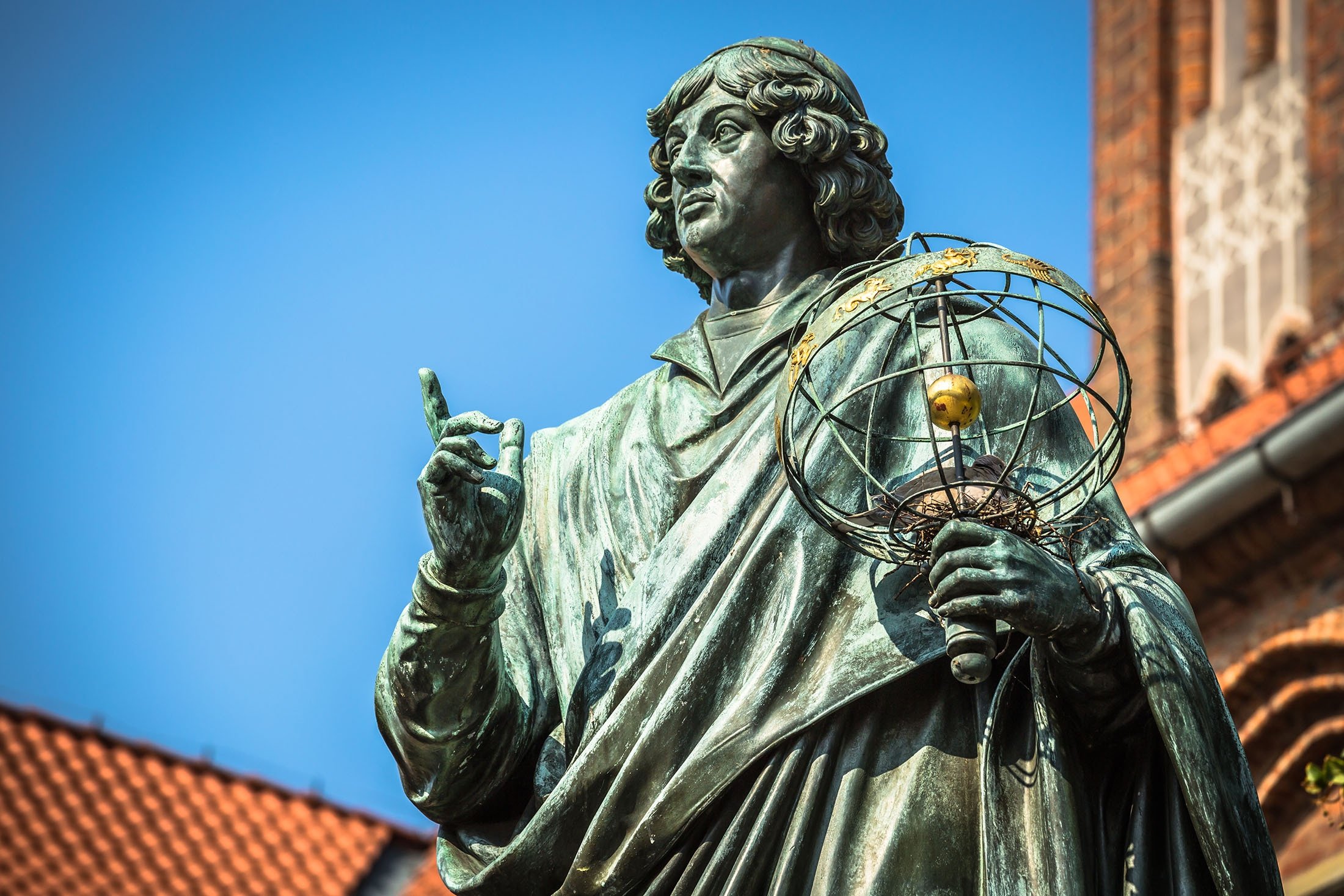
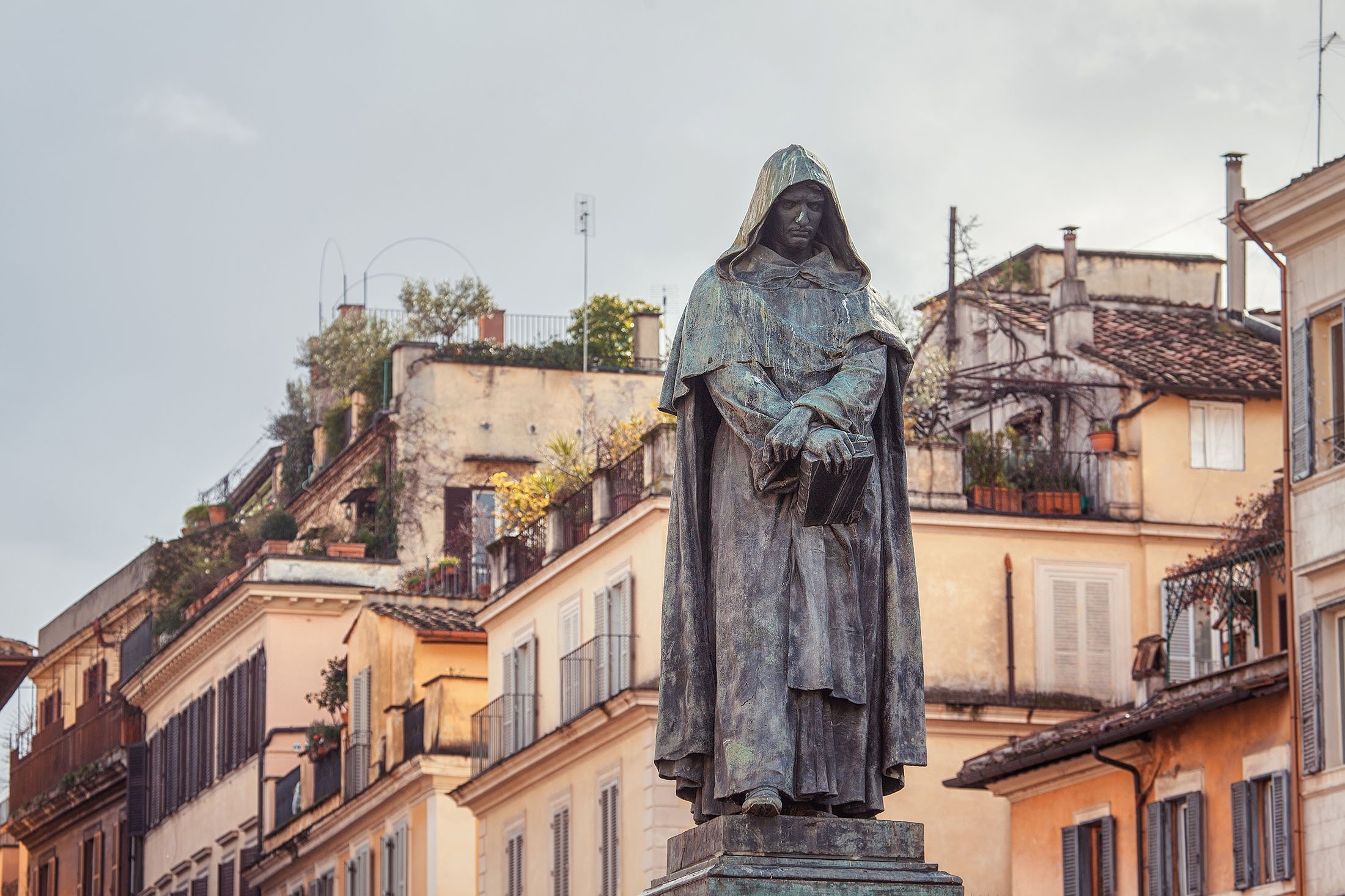
The spokesperson of the society was an atheist priest named Paolo Sarpi. The team included the philosopher Giordano Bruno, as well as Galileo, who followed in the footsteps of Copernicus.
Bruno is touted as a "martyr of science" today because he was killed by the church. But in fact, his supporters were caught preparing a revolution to establish a republic in Calabria called the City of the Sun, and Bruno was executed for this reason.
Venice, which wanted to reform the Catholic Church from within, established the Catholic-seeming Hermetic Jesuit order, also known as the Society of Jesus. On the other hand, it created anti-Church "Enlightenment" sects such as Freemasonry.


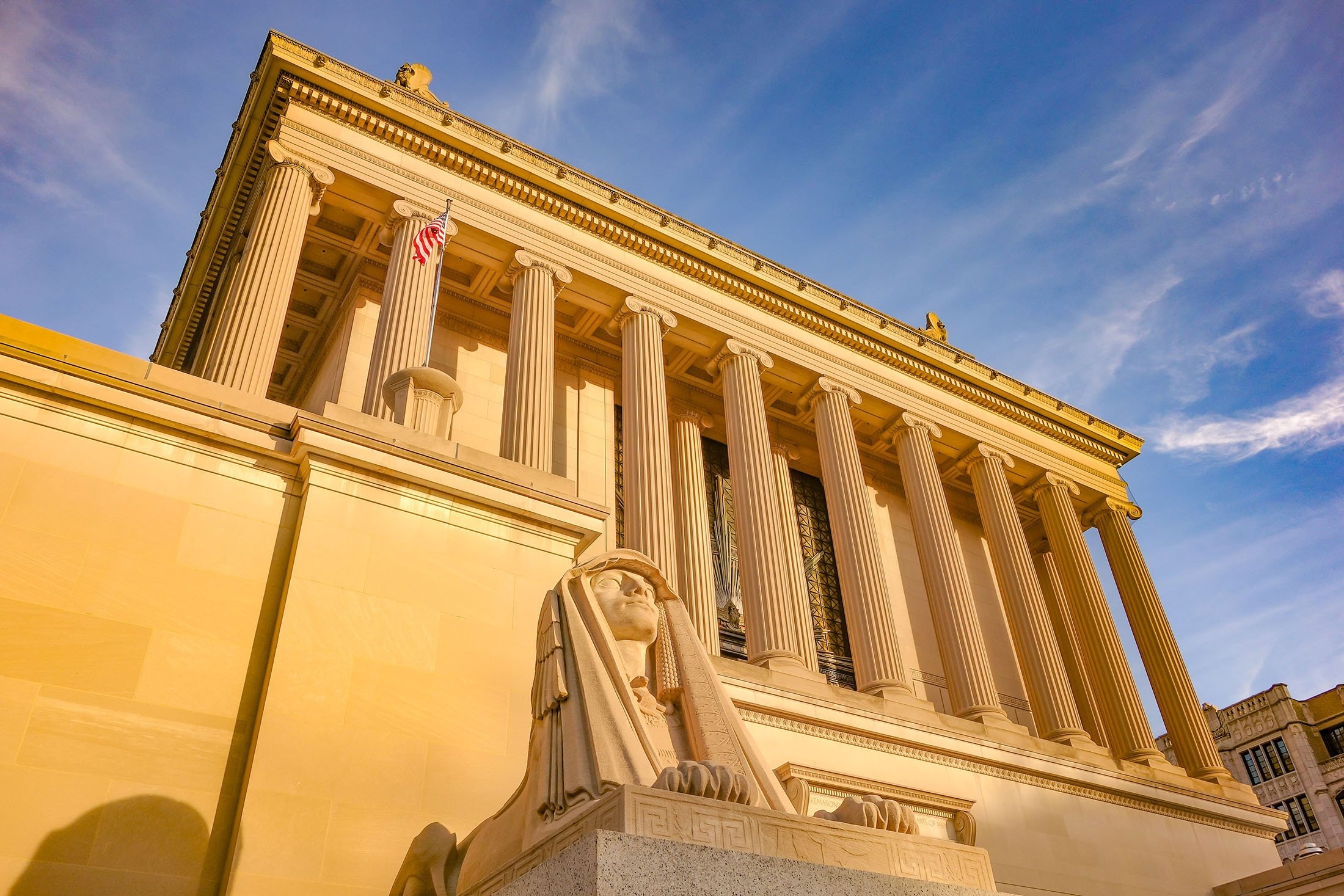

In Freemasonry, which was filled with Egyptian symbols, John the Baptist was considered the founding saint. The masons called themselves "John's men." They celebrated June 24, which is considered the date of his birth, as a festival.
With the revolutions that overthrew the monarchies, the Hermetics dominated the whole world. The obelisks found in London and New York were brought from the City of the Sun in Egypt. The Lighthouse of Alexandria can be seen everywhere today, from the Masonic monuments of Washington to the business towers in New York.
Today, the Hermetics strive for a single world religion based on the New World Order and ancient philosophy.
The Enlightenment
At that time, there was a geocentric understanding of the universe in Europe. Copernicus, a Hermetic studying at the University of Padua in Venice, objected to this notion. He claimed that the sun was at the center.
Renaissance historian Frances Yates writes of this: "The discovery of Copernicus came to light with a citation from that famous work of Hermes Trismegistos, where Hermes explains the Egyptians worshiping the Sun in their magical religion."
Hermetic Newton's theory of gravity centered on the massive sun, also strengthened Copernicus' claim. Thus, modern "science" was born.
In the 16th century, the Hermetics founded a secret society called "Giovanni," which is the Italian equivalent of "John," in the house of Venetian aristocrat Morosini. The origins of the Young Turks, a political reform movement in the early 20th century, can also be traced back to this society.


The spokesperson of the society was an atheist priest named Paolo Sarpi. The team included the philosopher Giordano Bruno, as well as Galileo, who followed in the footsteps of Copernicus.
Bruno is touted as a "martyr of science" today because he was killed by the church. But in fact, his supporters were caught preparing a revolution to establish a republic in Calabria called the City of the Sun, and Bruno was executed for this reason.
Venice, which wanted to reform the Catholic Church from within, established the Catholic-seeming Hermetic Jesuit order, also known as the Society of Jesus. On the other hand, it created anti-Church "Enlightenment" sects such as Freemasonry.




In Freemasonry, which was filled with Egyptian symbols, John the Baptist was considered the founding saint. The masons called themselves "John's men." They celebrated June 24, which is considered the date of his birth, as a festival.
With the revolutions that overthrew the monarchies, the Hermetics dominated the whole world. The obelisks found in London and New York were brought from the City of the Sun in Egypt. The Lighthouse of Alexandria can be seen everywhere today, from the Masonic monuments of Washington to the business towers in New York.
Today, the Hermetics strive for a single world religion based on the New World Order and ancient philosophy.
No comments:
Post a Comment